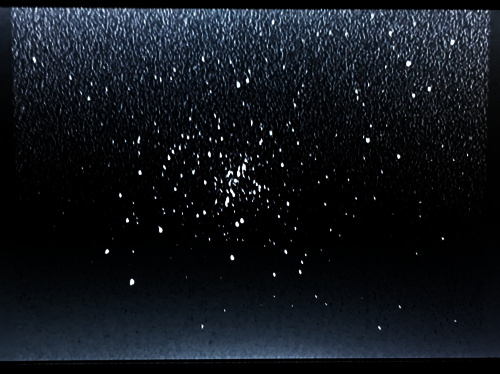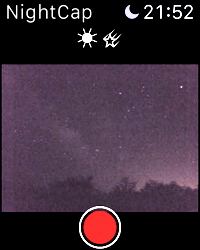ETX-125AT/Revolution Imager: planets, DSOs;
iPhone/NightCap Pro: Milky Way, planets
Posted: 6 July 2016
Clouds returned on Monday, 4 July 2016, but the sky cleared on Tuesday, 5 July.
|
Open: Tuesday, 5 July 2016, 1922 MST Temperature: 93°F |
Session: 992 Conditions: Clear |
Equipment Used:
ETX-125AT
1.25" 26mm eyepiece
1.25" 3X TeleXtender
Camera:
Revolution Imager
iPhone 6s Plus
1937 MST: sunset. Muggy again this night. I set up the ETX-125AT along with the Revolution Imager on the observatory patio:

SYNced the observatory clock to WWV.
2000 MST: ETX ON. Did an Easy Align, then a GOTO Jupiter. Viewed Jupiter and the four Galilean Moons, 73X. Then viewed Jupiter, 219X. The Great Red Spot was not visible this night. Next, viewed Mars, 73X and 219X. Some surface details visible. Viewed Saturn, 73X and 219X. The moons Titan and Rhea were visible using both magnifications.
The thin crescent Moon was visible just above the trees. Viewed it at 73X. This is a handheld iPhone afocal 73X image through the ETX-125AT:

2018 MST: Revolution Imager (RI) ON. For planets viewing used the camera at prime focus of the ETX-125. First up was Jupiter and the moons. This photograph of the RI screen shows Jupiter (overexposed) and the four Galilean Moons:

Mars showed some surface details with the Imager. But Saturn was the best. Cassini Division was even visible. This screen photo doesn't do the actual image justice:

By increasing the camera exposure, four of Saturns moons were visible. Here you can see Titan, Rhea, Dione, and Tethys:

Added the RI focal reducer and viewed M4 (globular cluster):

I then tried for M65 (galaxy) but was unsuccessful this night getting it. But M20 (Trifid Nebula) was an awesome Deep Sky Object (DSO) with the RI:

And M8 (Lagoon Nebula):

M17 (Swan Nebula):

M57 (Ring Nebula):

While using the Revolution Imager this night I did some comparisons of the "Manual" vs "Fix" settings. I did not see any significant difference in the exposure settings or the look of each object viewed. 2119 MST: ended Revolution Imager use. I have updated the Revolution Imager settings files: Excel, PDF.
As I was packing up the RI I saw and terminated a Kissing Bug. Saw a second one but he got away.
I viewed M57 (Ring Nebula) with the ETX-125AT, 73X. Lovely view. 2131 MST: ETX OFF.
I then began setting up for sky imaging using the iPhone 6s Plus with the iOS app NightCap Pro. I mounted the iPhone on the camera tripod using the SteadyPix adapter. Set NightCap Pro for Long Exposure, Light Boost, ISO 8000, and shutter speed 1/3sec. This 1 minute exposure shows the Milky Way (left), the constellations of Sagittarius and Scorpius, and the planets Saturn and Mars:

Mouseover or tap on image for labels
I used the Apple Watch to start and stop the exposure above. This is how the image looked "live" on the Watch:

It was so cool to see the Milky Way, stars, and planets "live" on the Apple Watch!
2155 MST: ended imaging and began closing up for the night.
|
Close: Tuesday, 5 July 2016, 2215 MST Temperature: 77°F |
Session Length: 2h 53m Conditions: Clear, breezy |
Comments are welcome using Email. Twitter users can use the button below to tweet this report to your followers. Thanks.
Cassiopeia Observatory Home Page
Copyright ©2016 Michael L. Weasner / mweasner@me.com
URL = http://www.weasner.com/co/Reports/2016/07/06/index.html
